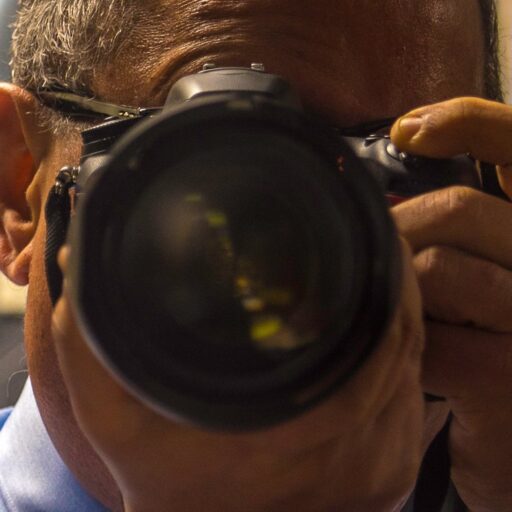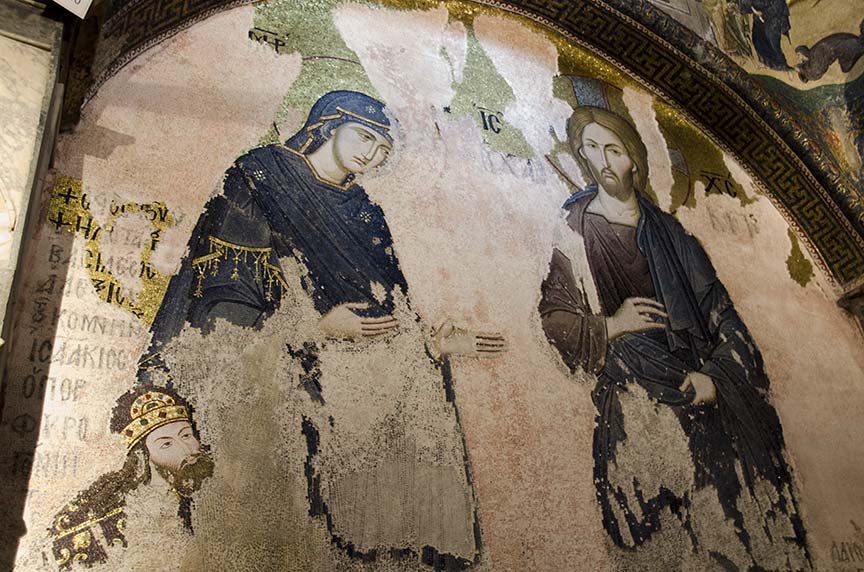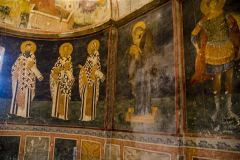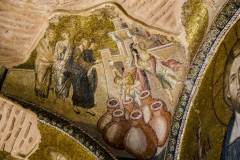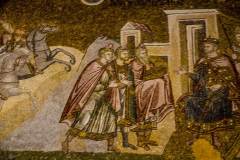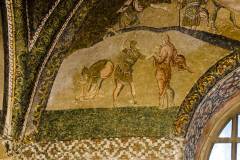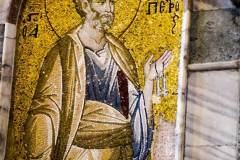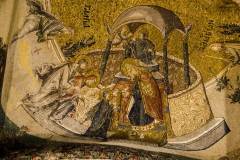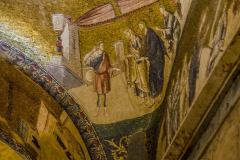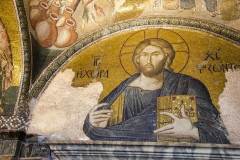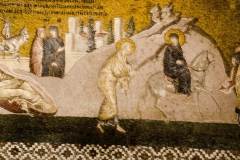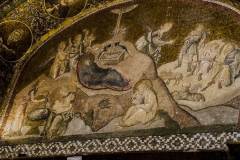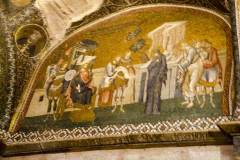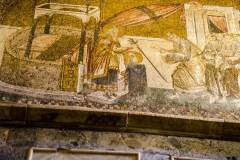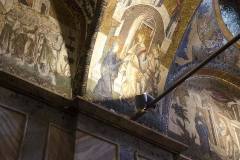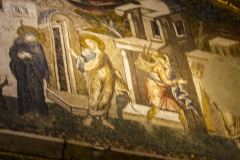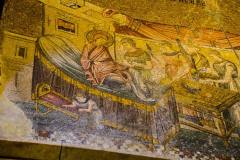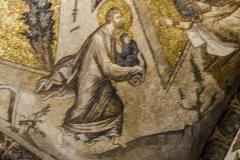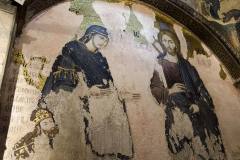The story of Chora Museum
The story of Chora Museum is a long and complex one that spans over a thousand years of history. Originally built as a small chapel in the early 4th century, the Church of the Holy Saviour in Chora was expanded and rebuilt several times over the centuries, eventually becoming a magnificent Byzantine church decorated with stunning frescoes and mosaics.
The church was located just outside the walls of Constantinople, and was often visited by Byzantine emperors and members of the imperial court. In the 11th century, the church was rebuilt by Emperor Alexios I Komnenos and his son, John II Komnenos, who decorated it with some of the most beautiful Byzantine art of the period.
The frescoes and mosaics in the Chora Church depict scenes from the life of Jesus Christ and the Virgin Mary, and are renowned for their beauty and technical skill. They show an impressive level of realism and detail, and are considered to be some of the finest examples of Byzantine art in existence.
In 1453, when the Ottoman Turks conquered Constantinople, the church was converted into a mosque and some of the Christian artwork was covered or removed. Over the centuries, the mosque underwent several renovations and additions, including the addition of a minaret and a large courtyard.
In the 20th century, the Chora Mosque was closed for restoration work, and in 1948 it was reopened as a museum. The restoration work revealed the beautiful mosaics and frescoes that had been covered for centuries, and they were restored to their former glory.
Today, the Chora Museum is one of the most important cultural institutions in Istanbul, and is a popular destination for tourists and art lovers from around the world. The museum’s collection of Byzantine art is considered to be one of the finest in existence, and the Chora Church itself is a stunning example of Byzantine architecture and decoration.
The Chora Museum, also known as the Kariye Museum, is a museum in Istanbul, Turkey, that was originally a Byzantine church, converted into a mosque, and later transformed into a museum.
The original church, called the Church of the Holy Saviour in Chora, was built in the early 4th century outside the walls of Constantinople (now Istanbul) as a small chapel. In the 5th century, it was expanded and rebuilt as a large basilica. However, the current structure mostly dates from the 11th to 14th centuries, when it was rebuilt by the Byzantine Emperor Alexios I Komnenos and his son, John II Komnenos. The church was decorated with stunning frescoes and mosaics, depicting scenes from the life of Jesus Christ and the Virgin Mary.
In 1453, when the Ottoman Turks conquered Constantinople, the church was converted into a mosque and some of the Christian artwork was covered or removed. During the Ottoman era, the mosque underwent several renovations and additions, including the addition of a minaret and a large courtyard.
In 1945, the mosque was closed for restoration work, and in 1948 it was reopened as a museum. The restoration work revealed the beautiful mosaics and frescoes that had been covered for centuries, and they were restored to their former glory. Today, the Chora Museum is home to one of the finest collections of Byzantine art in the world, and it is a popular tourist attraction in Istanbul.
Chora museum, Chora Church or The Church of the Holy Savior is one name to beautiful place we visited during our visit to Istanbul.
The Turkish word Kariye is derived from the ancient Greek word Chora meaning outside of the city
It was the old colorful painting on the wall and the experience of our tour guide. I was extremely glad that was one of her favorite places because she explained every paint with the most specific details.
The story was just like Aya Sophia museum, a former Byzantine church on the 5th century, later Ottoman transform it to a mosque in the 16th century and then become a museum in the early 20th century.
I am so glad they did not covered or altered these magnificent colorful hand painting that covers the entire wall and ceiling.
